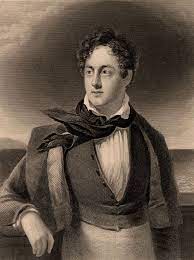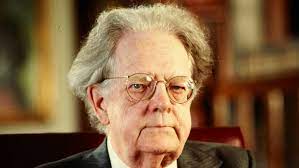Facts about Lord Byron Of American Poet
George Gordon Byron, Generally referred to as Lord Byron, he was a prominent Romantic poet from Britain. He was notorious for his colorful lifestyle, rebellious spirit, and exceptional poetic genius. He was born in London on January 22, 1788. A string of scandalous relationships, political involvement, and lengthy journeys characterized Byron’s life and had a lasting impression on his poetry and legacy.
Early Life and Family:
Byron was born into a troubled aristocratic family. While his mother, Catherine Gordon, was descended from a prosperous Scottish family, his father, Captain John Byron, was a wasteful and extravagant man. At the age of eleven, Byron received the title of “Lord” following the passing of his great-uncle, William Byron. But the family estate was indebted, and Byron was raised in a volatile financial environment.
Following the death of his father in 1791, Byron became the 6th Baron Byron. The Byron family seat in Nottinghamshire, Newstead Abbey, was abandoned when the family relocated there, and it was in poor condition. Byron’s early experiences with financial hardships and familial strife shaped his later works’ recurring themes of love, power, and society expectations.
Education and Early Literary Influences:
Byron’s early education took place in Aberdeen, Scotland, where he lived with his mother. He was born with a clubfoot, a physical deformity that deeply affected his self-esteem. This, along with his sensitivity, fueled a rebellious spirit against societal norms. In 1801, he attended Harrow School, where he formed his first deep emotional attachments and began to show an interest in poetry.
His experiences at Harrow and later at Trinity College, Cambridge, profoundly influenced his literary tastes and political views. Byron developed a fascination with the Romantic poets, particularly the works of John Milton, William Wordsworth, and Alexander Pope. His exposure to classical literature, particularly the works of the ancient Greeks, also played a significant role in shaping his poetic style.
Early Poetic Works:
Byron’s literary career began with the publication of his first book, “Hours of Idleness,” in 1807. The collection received mixed reviews, with harsh criticism from the Edinburgh Review, which famously referred to Byron as “a nobleman, born for better things.” This critique stung Byron deeply and fueled a determination to prove himself as a poet.
In response, Byron published “English Bards and Scotch Reviewers” (1809), a satirical poem that fiercely attacked his critics and established him as a force to be reckoned with in the literary world. This early success set the stage for Byron’s meteoric rise in the Romantic literary scene.
Grand Tour and Romantic Excess:
In 1809, Byron embarked on the Grand Tour, a traditional journey of Europe undertaken by young aristocrats. During his travels through Portugal, Spain, Albania, and Greece, Byron developed a deep fascination with foreign cultures, and his experiences fueled his creativity. The result was the first two cantos of his epic narrative poem, “Childe Harold’s Pilgrimage” (1812), which gained him immediate fame.
Also Read-
- Facts about Pablo Neruda Of American Poet
- Facts about Alfred Lord Tennyson Of American Poet
- Facts about Percy Bysshe Shelley American Romantic Poet
Byron’s personal life during this period was marked by romantic entanglements and liaisons, including a tempestuous affair with Caroline Lamb. His marriage to Anne Isabella Milbanke in 1815, however, proved disastrous. The couple separated shortly after the birth of their daughter, Ada Lovelace, and Byron left England, never to return.
Exile and the Byronic Hero:
Byron’s self-imposed exile marked a transformative period in his life and poetry. Living in Switzerland, Byron wrote some of his most acclaimed works, including the poetic drama “Manfred” (1817) and the long narrative poem “The Prisoner of Chillon” (1816). The latter was inspired by his visit to the dungeon where François de Bonivard, a 16th-century political prisoner, had been held.
During this time, Byron’s poetic persona, the “Byronic Hero,” emerged as a recurring figure in his works. This character, often a rebellious and melancholic individual, reflected Byron’s own complex personality and became a defining element of Romantic literature.
- “Childe Harold’s Pilgrimage” (1812-1818):
- This lengthy narrative poem is one of Byron’s earliest major works and brought him widespread fame. It follows the travels of the melancholic young man, Childe Harold, through Europe and the Middle East, reflecting Byron’s own experiences during his Grand Tour.
- “Manfred” (1817):
- A dramatic poem that explores themes of guilt, redemption, and the supernatural. The titular character, Manfred, struggles with inner demons and faces the consequences of his actions. The work is often seen as a reflection of Byron’s own internal conflicts.
- “The Giaour” (1813):
- An early narrative poem that draws on themes of vengeance and the supernatural. Set in Greece, it tells the story of Leila, a Greek maiden, and her tragic fate. The poem exhibits Byron’s fascination with exotic settings and his exploration of the darker aspects of human nature.
- “The Corsair” (1814):
- This narrative poem, set in the Mediterranean, tells the tale of Conrad, a pirate captain, and his love for Medora. “The Corsair” was immensely popular and sold remarkably well, contributing to Byron’s literary celebrity.
- “She Walks in Beauty” (1814):
- One of Byron’s most famous shorter poems, this lyric celebrates the beauty of a woman. The poem’s elegance and romantic sentiments have made it a beloved piece in English literature.
- “Don Juan” (1819-1824):
- Byron’s satirical epic poem, “Don Juan,” is a lengthy and irreverent work that explores the adventures and romantic exploits of its titular character. The poem is known for its humor, social commentary, and exploration of the complexities of love.
- “The Prisoner of Chillon” (1816):
- Inspired by the true story of François de Bonivard, a political prisoner, this narrative poem reflects on themes of freedom and captivity. It’s set in the dungeons of Chillon Castle on Lake Geneva and showcases Byron’s ability to blend historical inspiration with poetic imagination.
- “Darkness” (1816):
- Composed during the “Year Without a Summer,” this apocalyptic poem reflects the environmental and existential anxieties of the time. It is a bleak and imaginative work that explores the end of the world.
- “Beppo” (1818):
- A satirical narrative poem that diverges from Byron’s typical serious tone. “Beppo” humorously explores the theme of infidelity and is set in Venice. It was innovative for its use of ottava rima, an Italian stanzaic form.
- “The Vision of Judgment” (1822):
- A satirical poem that critiques the poet laureate Robert Southey, it humorously depicts the Last Judgment. The poem caused controversy for its irreverent portrayal of Southey and the poem’s humorous tone.
Legacy:
- Poetic Influence:Byron’s poetry, marked by its emotional intensity, vivid imagery, and lyricism, has had a lasting impact on literature. His exploration of personal and societal themes, as well as his innovative use of the narrative form, inspired and influenced generations of poets. The Byronic Hero archetype, a complex and often tormented figure, became a recurring motif in Romantic and Victorian literature.
- Byronic Hero:The Byronic Hero, characterized by qualities such as defiance, passion, and a sense of exile, became an enduring literary archetype. Characters embodying the traits of the Byronic Hero can be found in works by authors such as Emily Brontë, Fyodor Dostoevsky, and even modern antiheroes in literature and film.
- Political Engagement:Byron’s active involvement in the Greek War of Independence has left a legacy beyond literature. His commitment to the cause and his financial support made him a national hero in Greece. Byron’s efforts are commemorated in various ways, including a monument in Athens and the naming of the city’s central square after him.
- Cultural Impact:Byron’s influence extends into popular culture. References to his works, especially “Childe Harold’s Pilgrimage,” can be found in music, film, and contemporary literature. His poems and quotes are often cited and adapted, demonstrating the enduring relevance of his words.
- Literary Friendship:Byron’s association with fellow Romantic poets, such as Percy Bysshe Shelley and Mary Shelley, contributed to the intellectual and artistic atmosphere of the time. The collaboration and exchange of ideas between these literary giants continue to be studied and celebrated in literary history.
- Memoirs and Persona:Byron’s memoirs, although not published in their entirety during his lifetime due to their scandalous content, became a posthumous element of his legacy. They offered a glimpse into his life and contributed to the creation of the image of the Romantic poet as a rebellious and passionate figure.
- Social and Sexual Politics:Byron’s personal life, including his numerous love affairs and his open bisexuality, challenged societal norms of the time. His unapologetic approach to his relationships and his willingness to engage with taboo subjects paved the way for a more open discussion of sexuality and personal freedom in literature.
- Literary Criticism and Scholarship:Byron’s works have been the subject of extensive literary criticism and scholarly analysis. Critics have explored themes such as individualism, exile, and the sublime in his poetry, contributing to a deeper understanding of Romantic literature and the cultural context in which Byron lived.
- Modern Adaptations:Byron’s life and works continue to inspire modern adaptations and reinterpretations. Whether in novels, films, or theatrical productions, artists often draw on Byron’s themes and persona to create contemporary works that resonate with new audiences.

















